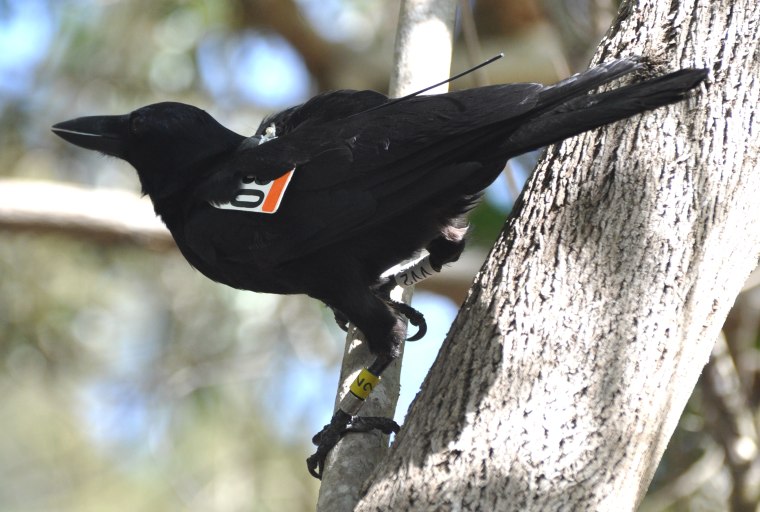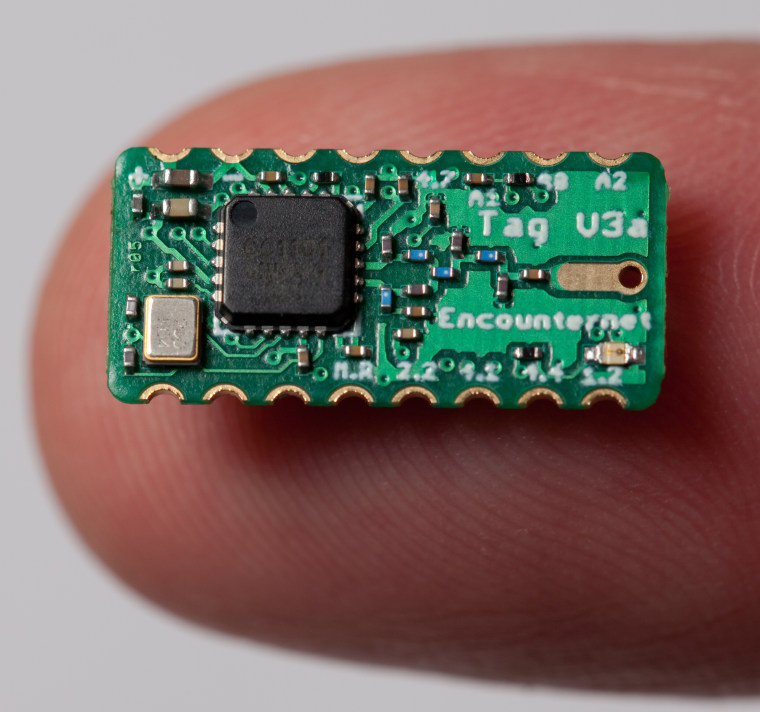
Crows, sea lions, and many other critters use social networks to increase their fitness and survival. To understand how, researchers are turning away from Twitter and Facebook and, instead, looking to the power of tiny radio tags that record wildlife encounters.
Of course, the researchers can access the data logged by the tags via the Internet, which means they can spend more time working in the lab rather than in the field waiting to catch a glimpse of critter meetup.
The system, called Encounternet, hinges on fingernail-sized tags that weigh as little as less than 1 gram (0.035 ounces) and send and receive pulses. Each tag emits a unique pulse, allowing researchers to know what animals met when.
While radio tags have been widely deployed to study the wanderings of everything from bees to turtles, the University of Washington-developed Encounternet tags are the first small scale tags that can monitor each other.
“You can’t even start to do that with other radio-tracking technology,” John Burt, an associate professor of electrical engineering at the University of Washington and CEO of Encounternet, said in a news release.

The tags are attached to critters with biodegradable straps and communicate with base stations scattered about the study area. Researchers access the base station with their laptops, which, if there’s a wireless signal in range of the base station, they can do over the Internet in their lab.
Earlier this month, a team from the University of St. Andrews in Scotland and the University of Washington published a paper based on data collected by the tags.
Their findings in the journal Current Biology show that crows in New Caledonia, an island chain in the South Pacific, have an impressively large social network.
In just a week, the tags recorded more than 28,000 interactions among 34 crows. That’s impressive, given that core family units contain just three members. The findings show that all the birds are connected to a larger social network.
Understanding the size and scope of the social network, in turn, may help explain whether the crows learn to use tools from each other, as some scientists speculate. The crows are well known in research circles for their prolific tool users.
Other studies underway with the tags are looking at the mating behavior of long-tailed manikins and interactions between birds and army ants in Costa Rica as well as behavior of sea lions when they pull up to beaches in the Galapagos Islands.
Burt, who managed the project to develop the tags with funding from the National Science Foundation, is now working on new features including GPS and accelerometer functions that could help detect animal behavior, such as how a rodent scampers away from an attacking owl.
No word on when the tags will allow the critters to post status updates to Facebook or check in on Foursquare.
John Roach is a contributing writer for NBC News Digital. To learn more about him, check out his website. For more of our Future of Technology series, watch the featured video below.